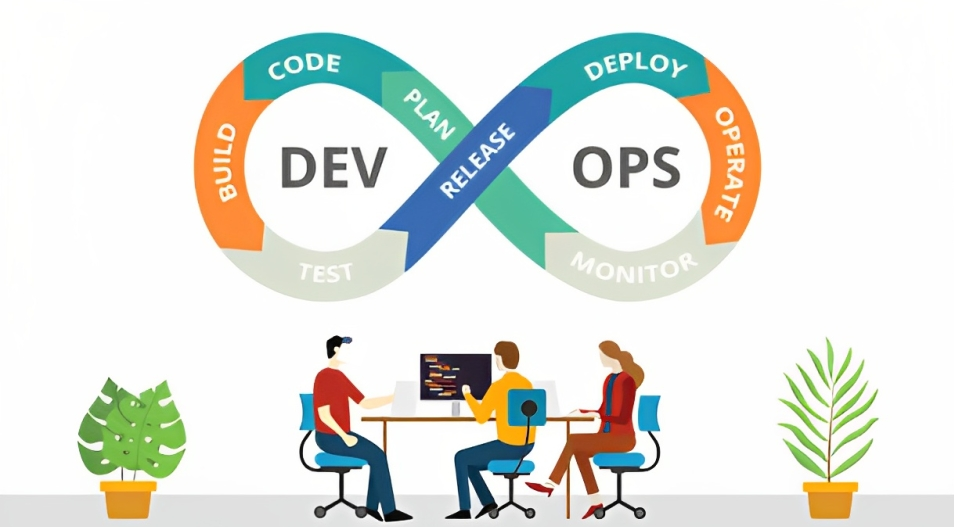Explore the Power of DevOps 🚀
 Muhammad Umer
Muhammad Umer
In 2023, DevOps continues to revolutionize the software development landscape. Organizations across industries have embraced DevOps to streamline their processes, boost collaboration, and accelerate time-to-market. Automation, scalability, and infrastructure-as-code have become fundamental pillars of DevOps practices, enabling faster and more reliable software releases.
With a strong emphasis on continuous integration and delivery, DevOps teams are achieving higher levels of efficiency, quality, and innovation. As businesses face increasingly complex challenges, DevOps remains a key enabler for organizations to stay competitive, adapt quickly to market demands, and deliver exceptional user experiences in the dynamic digital era.
What is DevOps?
DevOps, short for Development and Operations, is a cultural and technical approach that promotes collaboration, communication, and integration between software development teams and IT operations. It bridges the gap between these traditionally siloed departments, fostering a culture of shared responsibility and accountability. DevOps combines people, processes, and tools to streamline software development, testing, deployment, and maintenance, with a focus on continuous delivery and continuous improvement.
The Power of Automation in DevOps
Automation lies at the heart of DevOps practices, revolutionizing the way software development teams operate. By automating repetitive and manual tasks, such as code compilation, testing, and deployment, DevOps brings numerous benefits to organizations. Firstly, it significantly reduces human error, as automated processes are consistent and reliable. Additionally, automation enhances efficiency by freeing up valuable time and resources that can be invested in more critical tasks.
DevOps leverages a range of automation tools and frameworks to streamline the software development lifecycle. Automated testing frameworks, such as Selenium and JUnit, allow developers to conduct comprehensive and repeatable tests, ensuring the quality and reliability of the software. Continuous integration and delivery (CI/CD) pipelines automate the process of building, testing, and deploying software, enabling faster release cycles and reducing the chances of errors introduced during manual interventions.
Scaling Strategies in DevOps
As businesses experience growth and their user bases expand, it becomes paramount to ensure that their software systems can effectively handle increased traffic and maintain optimal performance. This is where DevOps proves invaluable. DevOps enables organizations to scale their infrastructure flexibly and efficiently, both horizontally and vertically, by leveraging cutting-edge technologies such as cloud computing, containerization, and orchestration.
Horizontal scaling involves adding more resources, such as servers or instances, to distribute the workload across multiple nodes. This allows organizations to handle increased traffic and ensure that their systems can handle higher volumes without sacrificing performance. DevOps facilitates horizontal scaling by leveraging cloud computing services like Amazon Web Services (AWS) or Microsoft Azure, which provide easy provisioning of resources on demand.
Vertical scaling, on the other hand, involves upgrading the existing resources to handle increased demands. This typically involves increasing the processing power, memory, or storage capacity of the servers or instances. DevOps practices facilitate vertical scaling by automating the provisioning and configuration processes, allowing organizations to quickly and efficiently upgrade their infrastructure as needed.
Containerization technologies, such as Docker, also play a vital role in scaling with DevOps. By encapsulating applications and their dependencies into lightweight and portable containers, organizations can easily scale their software systems across different environments. Container orchestration platforms, like Kubernetes, further enhance scalability by automating the management and deployment of containers, ensuring efficient resource utilization and fault tolerance.
Infrastructure as Code
Traditionally, managing infrastructure required manual configurations and tedious processes. However, with the advent of DevOps, a revolutionary concept called Infrastructure as Code (IaC) has emerged to simplify infrastructure management.
In simple terms, Infrastructure as Code means defining, provisioning, and managing infrastructure resources using code. Instead of manually setting up servers, networks, and other components, DevOps introduces tools like Terraform and AWS CloudFormation that allow developers to write code to describe their desired infrastructure state. This code serves as a blueprint that can be version-controlled and shared among team members.
Benefits of IaC
It enhances agility by allowing developers to easily replicate environments across software development stages, enabling quick provisioning and de-provisioning of infrastructure, saving time and resources.
It offers scalability advantages, allowing developers to easily adjust their infrastructure to meet changing demands by making simple code modifications. This flexibility enables efficient resource utilization and cost-effectiveness, whether scaling up during peak traffic or scaling down during quieter periods.
It eradicates configuration drift by enabling all infrastructure changes to be made through code, ensuring consistency and easy replication of modifications across environments.
Why is DevOps Important?
DevOps has emerged as a game-changer for organizations looking to stay ahead in today's competitive market. Here are some key reasons why DevOps has become essential:
Faster Time to Market:
DevOps enables rapid software releases, reducing the time it takes to deliver new features and enhancements to end-users.
Improved Collaboration:
By fostering collaboration and breaking down barriers between development and operations teams, DevOps promotes cross-functional teamwork and knowledge sharing.
Enhanced Quality and Stability:
The automation and continuous testing practices of DevOps help identify and address issues earlier in the development process, leading to more stable and higher-quality software.
Efficient Resource Utilization:
With DevOps, organizations can optimize resource allocation, provision infrastructure on-demand, and leverage cloud computing to maximize efficiency and cost-effectiveness.
Subscribe to my newsletter
Read articles from Muhammad Umer directly inside your inbox. Subscribe to the newsletter, and don't miss out.
Written by

Muhammad Umer
Muhammad Umer
Looking towards opportunities and helping beginners to start. 😉